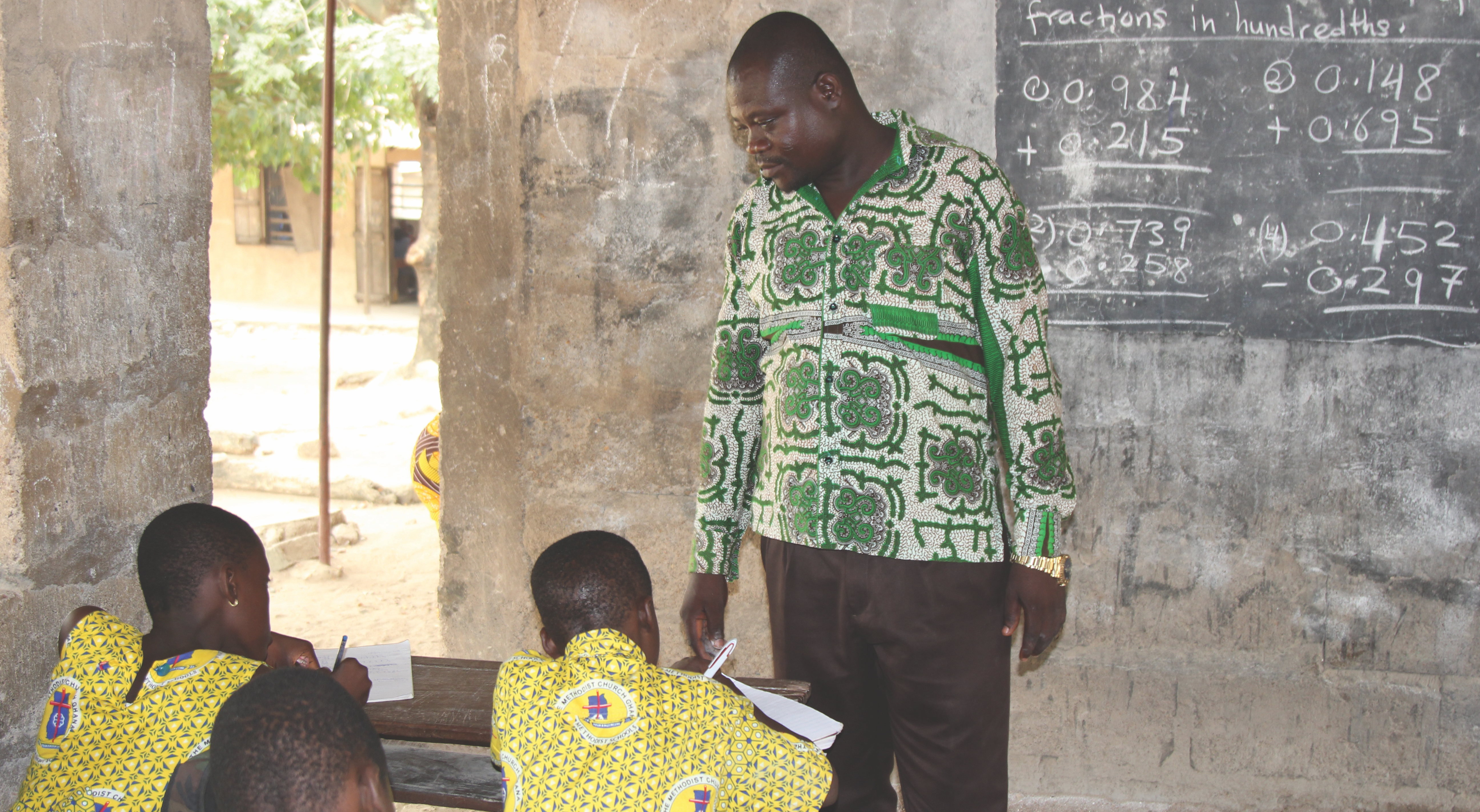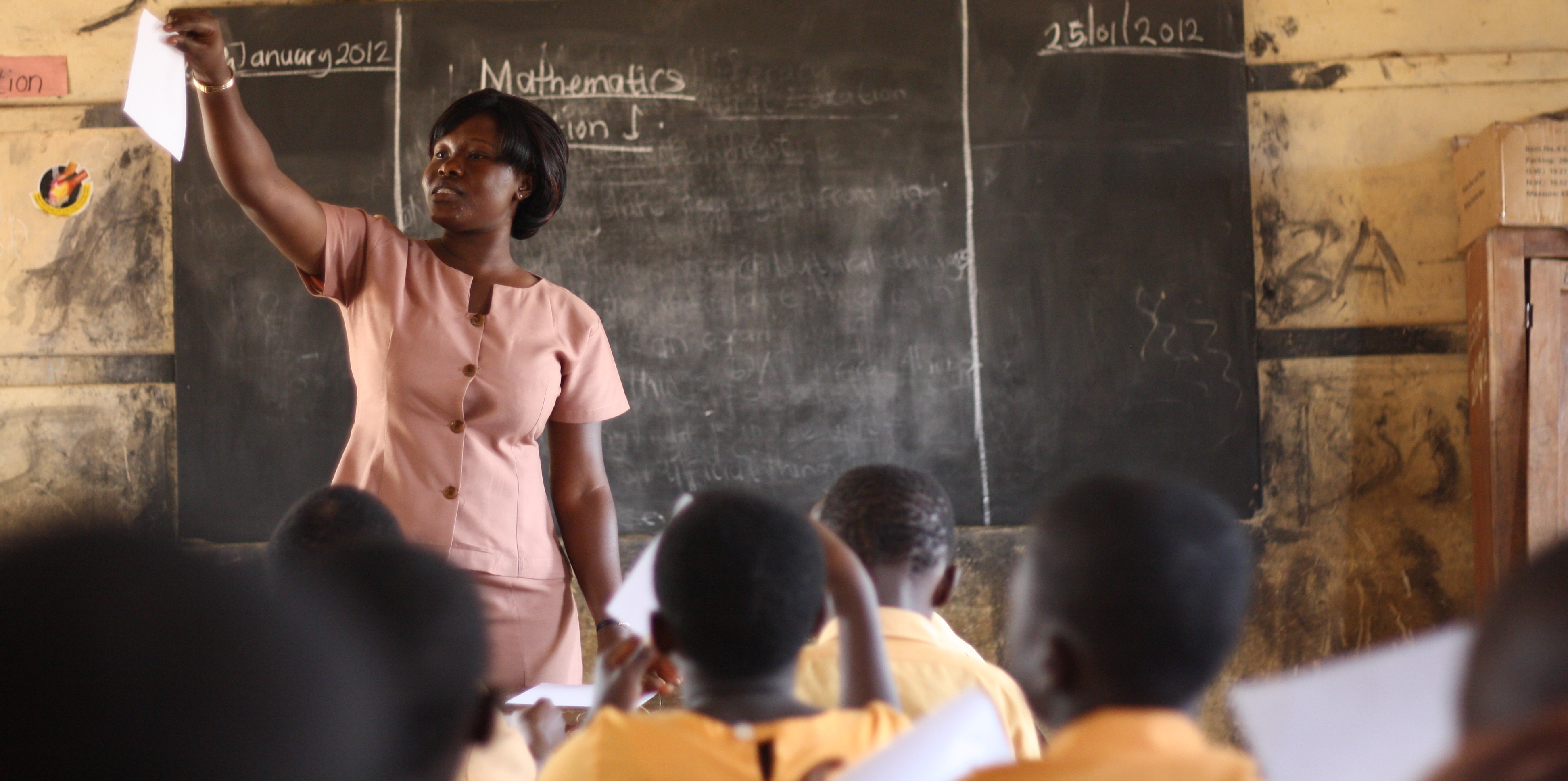When Governments Drive Learning: Using Research to Inform Education Policy in Ghana
By Shahana Hirji and Cynthia Bosumtwi-Sam

Scaling up an effective solution is often seen as the holy grail of the evidence movement—but figuring out how to get from a proof of concept to implementation at scale by a government is often an elusive goal.
At IPA, based on observing several successes (and many failures), we have learned that building government buy-in and ownership is key to reaching this goal. But building this type of ownership requires starting at the beginning and at times staying the course over (about) a decade. The principle of government ownership is that governments should lead the design and implementation of programs taking place in the public sectors of their countries.
The principle of government ownership is that governments should lead the design and implementation of programs taking place in the public sectors of their countries.
This case study shares the Ghana Ministry of Education, IPA, and UNICEF’s experience and lessons learned in facilitating government ownership of the Strengthening Accountability to Reach All Students (STARS) program, a targeted instruction program and accompanying evaluation in Ghana. Unlike researcher-driven or donor-driven programs, the guiding framework for this study was that all stakeholders, especially government, have ownership over the program from its inception.
Researchers, IPA, and UNICEF partnered with Ghana Education Service (GES), the National Teaching Council (NTC), the National Council for Curriculum and Assessment (NaCCA), and the National Inspectorate Board (NIB) to design the curriculum, train teachers, and monitor the program via a wide, participatory process. This group of partners is what we refer to as the “program partners” throughout this document. IPA, working closely with UNICEF, has helped to promote and foster government ownership through every stage of the program, through:
- Aligning with and being responsive to country priorities and capabilities
- An intentional and collaborative process of program design
- Strengthening partnerships and implementation within the government system
- Sustained partner contact to resolve issues and reach key decisions
- Continuous monitoring and program iteration
Ownership of Prioritization and Program Design
Aligning with and being responsive to country priorities and capabilities

From 2010-2014, IPA partnered with GES to develop and evaluate the Teacher Community Assistant Initiative (TCAI) in public primary schools. TCAI used a pedagogical approach that targeted the level of instruction to pupils’ learning levels. An evaluation of TCAI measured the impact of both teacher-led and assistant-led versions of the program. While both versions improved pupils’ basic skills in numeracy and literacy, teachers displayed low levels of compliance with the program due to poor teacher accountability mechanisms. This raised an important question among researchers and program partners—how can we strengthen teacher accountability to further improve learning outcomes within the TCAI model? The Ministry of Education’s 2018-2030 Education Strategic Plan aligned well with this question, listing two of its key priorities as improving learning outcomes and strengthening school leadership and management to improve teacher accountability.
Equipped with the results from the TCAI intervention and the aligning priorities of the Ministry of Education, program partners began to explore different pathways to scale within the government system. Although the assistant-led TCAI model yielded higher compliance levels, it was too expensive to implement at scale. Most partners were convinced the teacher-led model was the most feasible option for scale given the relative affordability; the question was how to improve teacher fidelity to the program within public schools.
An intentional and collaborative process of program design
Presented with this challenge, program partners came together and revised the program design to leverage the roles of existing education personnel, including headteachers and circuit supervisors, by equipping them to better support teachers in delivering the targeted instruction curriculum. This is how the STARS program and accompanying evaluation was born.
A critical priority for the Ministry of Education, IPA, and UNICEF was to ensure that the intervention was delivered within existing government systems and structures to facilitate sustainability and pathways to scale. When designing the program, program partners convened a stakeholder consultative workshop to build a theory of change for the program. Participating in this exercise required partner organizations to invest time, resources, and ideas, helping to increase their buy-in and promote and foster ownership of the program.
A critical priority for the Ministry of Education, IPA, and UNICEF was to ensure that the intervention was delivered within existing government systems and structures to facilitate sustainability and pathways to scale.
Ownership of Implementation
Strengthening partnerships and implementing within the government system
During the program design phase, partners organized several meetings with the government agencies involved in the program, which include GES, NTC, NaCCA, and NIB, to identify who was best suited to implement each phase of the program based on their existing mandates. They assigned each agency a clear role that was appropriate to their mandate and gave them a Terms of Reference—a comprehensive description of what the roles entailed. This created a shared purpose, which influenced government agencies’ commitment and sense of ownership of the program. Involving headteachers and circuit supervisors through training on best practices to mentor, coach, and support teachers to implement the program has also helped create shared accountability at the district level.
Providing financial resources and technical support to implementing partners, UNICEF worked with all of the government agencies to develop the budgets needed to implement the various program activities. The agencies had control over these budgets, giving them the confidence to lead the program and have a vested interest in its success.
Ownership of Decision-Making
Sustained partner contact to resolve issues and reach key decisions

The technical team, a subset of the core program team, meets regularly to plan for key program activities, conduct spot checks in schools, report on program progress, and lead program implementation. This structure helps to democratize decision-making, facilitate communication among program partners, and enable better coordination, especially among government agencies.
Typically, specific challenges are escalated as they arise to the agency responsible for that particular aspect of the program. For example, after the National Council for Curriculum and Assessment received feedback on the STARS materials from an external organization, government agencies met to discuss this feedback, ensured that it was fully aligned to the government curriculum, and ultimately made the final decisions using their knowledge of the processes and cultural context within Ghanaian schools.
Continuous monitoring and program iteration
As the program progresses, partners convene a quarterly steering committee consisting of agency directors and technical officers to provide program oversight, discuss program design and implementation, and resolve any issues and make decisions. Each member of the steering committee has made field visits to the study’s schools and has reported back on these visits during the steering committee meetings. This continuous engagement of the core team with the program builds buy-in and is important for continuity given high staff attrition in the government.
This continuous engagement of the core team with the program builds buy-in and is important for continuity given high staff attrition in the government.
One important point of deep partnership has been in the program’s monitoring and learning plan. Since each agency is responsible for specific activities, they had all planned to conduct independent monitoring tasks. However, to increase efficiency and coordination, the technical team agreed on a comprehensive monitoring plan that captured the interests of each implementing agency.
Several feedback mechanisms also enable the program partners to collaboratively resolve issues. For example, program staff conduct spot checks at schools, call schools to gather feedback on how the program is going, and have created a Help Desk where schools can call in to report issues and receive assistance and guidance.
Towards True Co-Ownership
While using the set of strategies described above does not guarantee that co-ownership between partners will emerge, they represent the program partners’ good faith efforts to collaborate deeply, enabling public sector leadership in a program that is implemented in public schools.
As the program progresses, IPA, in close collaboration with UNICEF, continues to provide technical assistance to partner agencies, creating an environment for the Ministry of Education to lead the implementation of the program at all levels.
While this mode of work requires extra intentionality and time, we hope that the goodwill and ownership it has generated so far will translate to greater success and use of evidence in the future.
For more information on targeted instruction programs, read our impact case study Teaching at the Level of the Child.












